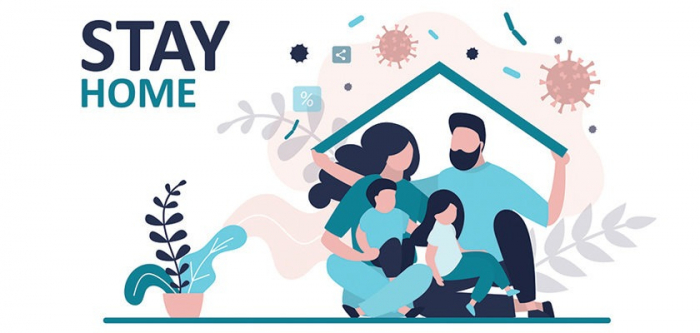In the case of infectious diseases such as coronavirus, R determines how many people will be infected by each person who already has the virus. To successfully defeat a pathogen like SARS-CoV–2, you need R to be less than 1 – meaning each person passes the infection on to less than one other person, which ultimately leads to fewer and fewer people being infected. In contrast, an R value greater than 1 represents a growing spread.
But how can we really know what measures are working to curb the spread of COVID–19 and put downward pressure on this all-important R number?
A new study led by paediatrician David Rubin from the Children's Hospital of Philadelphia gives us one of the clearest and most comprehensive perspectives on this yet in the US context, pooling data from 211 counties across the country, in total covering over half (54 percent) of the US population.
"Unequivocally, the strongest factor in our models that was associated with reduced transmission has been social distancing," Rubin told UPI.
"We need to accept some consistent national standards around masking, reducing the size of crowds and limiting access to locations, like indoor bars, where the risk of outbreaks has been highest."
The researchers wanted to understand what factors at county level seemed to impact R the most, which varies based on time and place. In the study, looking at data from February 25 to April 23, the team specifically examined the potential impact of three variables on R: social distancing, population density, and temperature.
As we all know, social distancing is supposed to curb the spread of coronavirus by limiting how much contact infected people have with non-infected people. Similarly, population density is expected to be an important factor in virus spread, with greater density (and thus less ability to socially distance) equating with greater transmission.
As for weather, its impact on coronavirus spread isn't as clear, as rising temperature and humidity levels are thought to have an impact on virus transmission, but the evidence is somewhat mixed.
In the new study, social distancing was measured by county-level mobile location data, estimating levels of travel to non-essential businesses during shutdown measures, compared against pre-pandemic trends.
To the extent that that's an accurate proxy, it looks like social distancing measures are indeed linked with the greatest reductions to R overall.
On average, the researchers found that a 50 percent decrease in visits to non-essential businesses correlated to a 46 percent drop in R, while a 75 percent decrease in visits to non-essential businesses correlated to a 60 percent drop in R.
Greater population density, as expected, also correlated with slight increases in R, and weather also seemed to have an impact, although again the effects were a bit unclear: the coldest and hottest wet-bulb temperatures both seemed to be linked to higher R values, but spring-like conditions in the middle correlated with the lowest R number.
On the whole, though, the researchers say the effects of social distancing look to have the greatest effect on reducing coronavirus transmission – bearing in mind, this is all observational data, so we can't confirm any actual effects here, but rather draw informed guesses on what might be working.
To that extent, the researchers say it's crucially important we listen to data like this, and use it going forward.
"Our data reveal that if the United States had collectively waited longer, opened more slowly, and then kept our gathering sizes small, we might have reduced case counts like Europe or Canada and experienced a relatively normal summer, free of extreme disease burden from COVID–19," Rubin explains in a press release.
"As the pandemic resurgence continues, we must commit to social distancing and universal masking nationwide in order to gain control of this epidemicand avoid a potentially catastrophic fall and winter season."
The findings are reported in JAMA Network Open.
More about:
















































